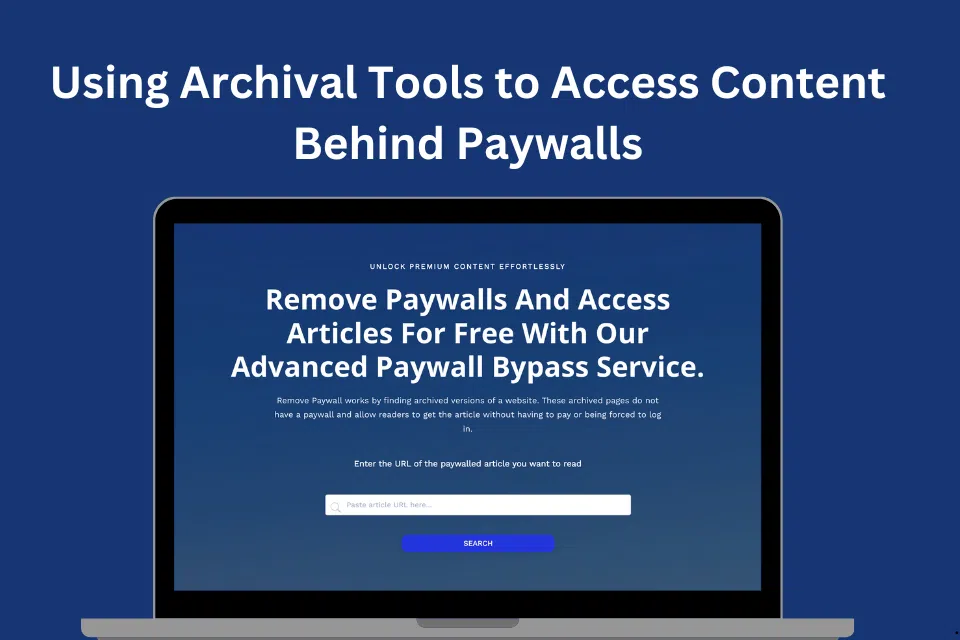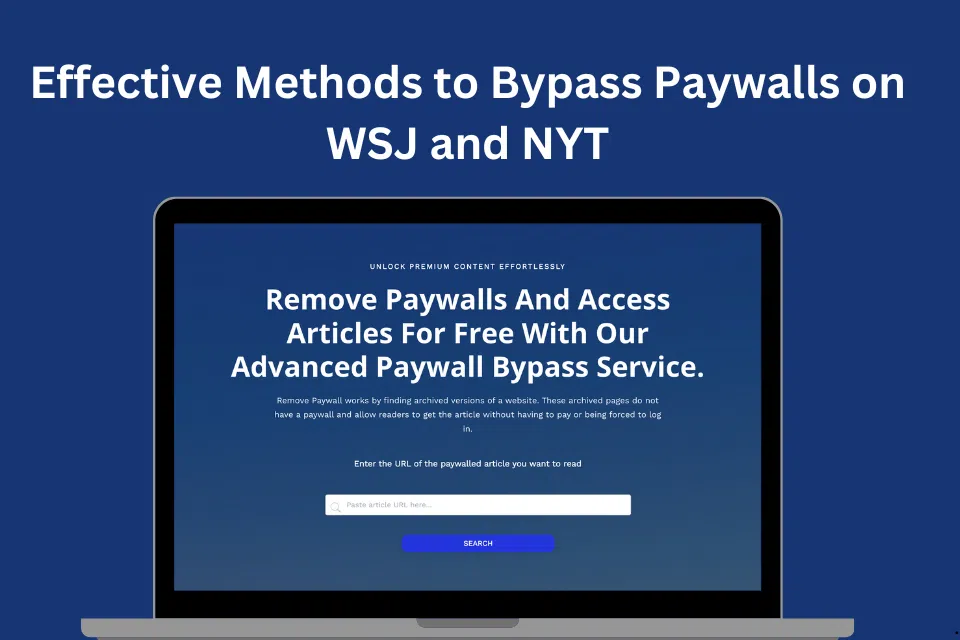As the digital landscape evolves, so do the strategies to monetize content, particularly through paywalls. While paywalls play a crucial role in supporting the creators and publishers of content, they can also be a barrier for users seeking quick access to news and information. Here, we’ll explore practical methods to bypass different types of paywalls, especially for websites and news subscriptions.
How to access Premium Content on A Website
Browser Extensions: There are several browser extensions designed specifically to bypass paywalls. These tools often exploit loopholes in website coding to allow users access. The Remove Paywall Chrome Extension is one such tool, widely effective across various sites. It modifies the HTTP headers sent from your browser to the website, effectively cloaking your access as one that should not trigger the paywall.
Modifying URL Structure: Some websites use simple methods to enforce paywalls. By modifying the URL, you can sometimes bypass this. Adding a dot after the domain name and before the rest of the URL (e.g., www.example.com./article) can trick the website into allowing access without triggering the paywall.
Web Proxies and VPNs: Using web proxies or a VPN can bypass geographical restrictions and sometimes paywalls. These services mask your IP address and can make it appear as though you are accessing the site from a different location, potentially one that the paywall does not cover.
Read-Only Modes: Several services offer a read-only mode for viewing articles. Tools like Pocket or Instapaper allow you to save a stripped version of the article, bypassing any interactive paywall elements.
How to access News Content
Incognito Mode: Simple but effective, many news websites allow a certain number of free articles before a paywall triggers. By using your browser’s incognito or private browsing mode, you can reset this count each time you open a new session, typically bypassing the soft paywall.
JavaScript Disabling: Some paywalls operate on JavaScript. By disabling JavaScript in your browser settings (found typically under “Site Settings” or “Privacy and Security”), you can stop the paywall from loading. Note, this might also affect other functionalities of the site.
Using Archive Services: Websites like the Wayback Machine or Archive.is allow you to view archived versions of web pages without a paywall. This method is particularly useful for older articles.
Social Media Links: News outlets often share articles on social media that are free to access to drive traffic. Finding the article through a social media post might bypass the paywall as these versions are sometimes not restricted.
Conclusion
While bypassing paywalls can provide quick access to content, it’s important to consider the impact on content creators and publishers who rely on these fees for revenue. These methods are intended for educational purposes and temporary access. For long-term, regular access, consider supporting your favorite publications through subscriptions.
For a detailed exploration of bypassing specific platforms, visit our dedicated page on Bypassing Paywalls on Specific Platforms. For more information on our tools and methods, check out our homepage.





